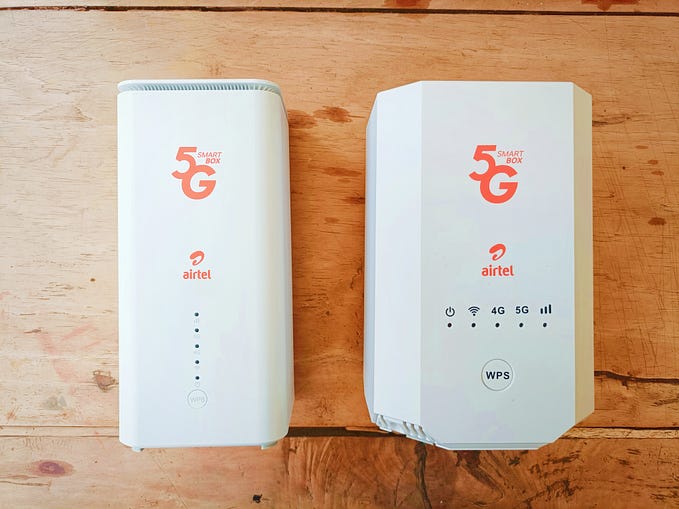Is Starlink (Finally?) Able To Disrupt Kenya’s Home Internet Market At Scale?

I’ve written extensively about Starlink in Kenya since it launched in the market last year. I did a comprehensive review about it last year when I had a disappointing experience that was largely due to ‘obstructions’ like trees and buildings around where I live that compromised the quality of satellite-based Internet connectivity.
I also had a surprisingly great experience with Starlink earlier this year when I stayed at holiday homes location in Nanyuki that made me a believer in the service, provided its setup right from the get go. The speeds were incredible at 100Mbps out in ‘the sticks’ or ‘the bundus’ in an area where Safaricom’s 4G Internet service was spotty and unreliable.
In the past week, a couple of interesting developments caught my attention where Starlink is concerned in Kenya. The first is that you can now walk into select Naivas Supermarkets in Nairobi and you can buy a Starlink terminal literally off the shelf as you would any electronics that they stock up.

This seems mind blowing to me given that Starlink has been using their website to sell online in Kenya or via one of their authorised resellers like Karibu Connect. This also comes on the back of a special offer that ended in June 2024 with a greatly reduced price of around 55% off the usual rate for the Starlink home Internet gear.
The second thing that happened last week, as was reported widely in most Kenyan media, is that Starlink also launched a more affordable subscription package or ‘bundle’ from their normal Kes. 6,500.00 unlimited package that costs only Kes. 1,300.00 for 50GB with opt-in for additional data at Kes. 20 per GB. This is really making their Internet service much more accessible to many Kenyan consumers.
In addition, it’s now possible to pay for your preferred Starlink subscription package using Safaricom’s ubiquitous M-Pesa mobile money platform as well as Airtel Money. In a nutshell, one thing is very clear — Starlink is going all in to win significant marketshare in Kenya from many of the usual suspects when it comes to home Internet services by removing as much friction as possible for adoption to scale up significantly.

My own perspective on Starlink until recently has been that its most ideal use case is for those who have limited or no Internet access through conventionally available means in hard to reach and underserved areas of Kenya. However, I now see is that if you can get your Starlink installed correctly and with all the right accessories like their ethernet adaptor, 45 meter cable and a long wall mount, you could be winning. Hands down!
That being said, there are still some major caveats to consider where Starlink is concerned for the average Kenyan consumer. The first is obviously the cost of buying the Starlink home Internet equipment. Kes. 40,000 is NOT peanuts relative to say getting a free router and home fibre installation with Internet Services Providers (ISPs) like Safaricom, JTL and VLCom and Zuku. Then you also have to buy additional Starlink accessories which could easily add another Kes. 50,000 to the satellite equipment cost so that could become a further barrier to widespread adoption.
This challenges to Starlink uptake for the home Internet user in Kenya also extends to alternatives like Safaricom and Airtel for their 5G home Internet offerings which now have unlimited Internet packages, albeit with capped speeds that are nowhere near uncapped 5G. These also come with heavily subsidised 5G Wireless WiFi routers with Airtel’s costing only Kes. 2,999.00 as of last month.

Another factor is that Airtel and Safaricom are investing massively to increase their 5G network coverage nationally and this will only serve to drive uptake even in areas that have been traditionally underserved. We also have others like Mawingu and Poa Internet who operate in areas that have traditionally not had great Internet service and they are picking up loads of customers too for their unlimited home Internet offerings.
One other caveat to using Starlink is that of high latencies. High latency on an Internet connection usually compromises things like video streaming as. Well gaming. This is something that Starlink will obviously address over time as it can affect the user experience quite significantly. That being said, as far as I can tell, for the most part, the service is still highly usable.
So, even with all these new developments where Starlink is concerned, can they actually make a real dent in Kenya’s home Internet market? My answer would be not yet for the majority of consumers. The single biggest issue is how much it costs to just get started with existing and decent alternatives available in most instances.
However, in areas where the majority of ISPs are not available in peri-urban and rural Kenya, Starlink may be the only option available for the majority. It will also be interesting to see how Starlink Mini will perform in the market if and when it is sold as a standalone offering in markets like Kenya and Africa given that its designed to be compact and work off-grid.








